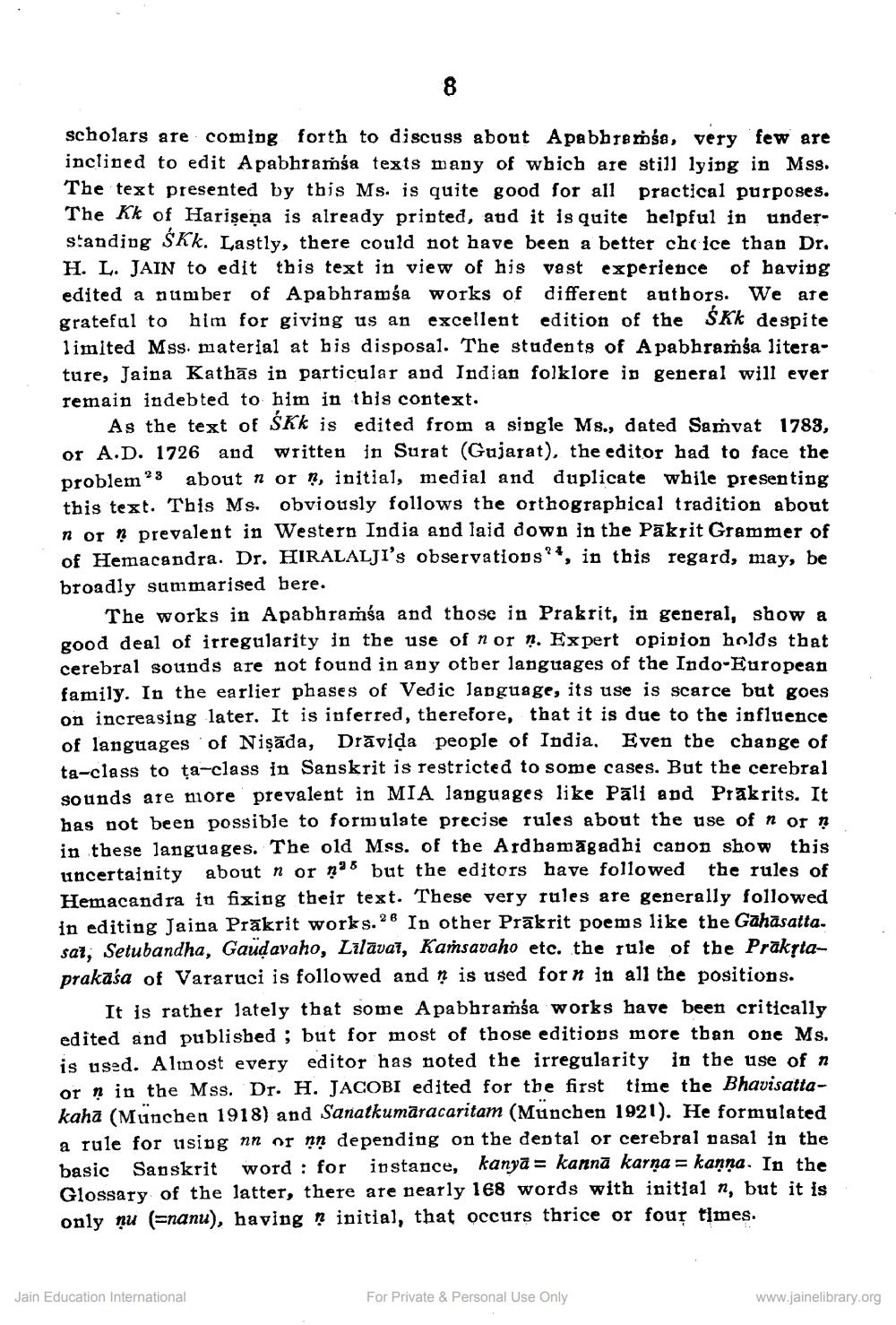________________
scholars are coming forth to discuss about Apabbremsa, very few are inclined to edit Apabhraíša texts many of which are still lying in Mss. The text presented by this Ms. is quite good for all practical purposes. The Kk of Harisena is already pripted, and it is quite helpful in understanding ŚKk. Lastly, there could not have been a better choice than Dr. H. L. JAIN to edit this text in view of his vast experience of haviog edited a number of Apabhramsa works of different autbors. We are grateful to him for giving us an excellent edition of the SKk despite limited Mss. material at his disposal. The students of A pabhramsa literature, Jaina Kathās in particular and Indian folklore in general will ever remain indebted to him in this context.
As the text of SKk is edited from a single Ms., dated Samvat 1783, or A.D. 1726 and written in Surat (Gujarat), the editor had to face the problem 23 about n or ņ, initial, medial and duplicate while presenting this text. This Ms. obviously follows the orthographical tradition about n or n prevalent in Western India and laid down in the Pakrit Grammer of of Hemacandra. Dr. HIRALALJI's observatiops?', in this regard, may, be broadly summarised bere.
The works in Apabhraíśa and those in Prakrit, in general, show a good deal of irregularity in the use of nor n. Expert opipion holds that cerebral sounds are not found in any otber languages of the Indo-European family. In the earlier phases of Vedic language, its use is scarce but goes on increasing later. It is inferred, therefore, that it is due to the influence of languages of Nişāda, Drāvida people of India. Even the change of ta-class to ta-class in Sanskrit is restricted to some cases. But the cerebral sounds are more prevalent in MIA languages like Pali apd Prakrits. It has not been possible to fornulate precise rules about the use of n or n in these languages. The old Mss. of the Ardhamāgadhi capon show this uncertainity about n or ņas but the editors have followed the rules of Hemacandra in fixing their text. These very rules are generally followed in editing Jaina Prākrit works. In other Prakrit poems like the Gahasatta. sal, Setubandha, Gaudavaho, Lilavai, Kaṁsavaho etc. the rule of the Prakrtaprakaśa of Vararuci is followed and ņ is used for n in all the positions.
It is rather lately that some Apabhramsa works have been critically edited and published ; but for most of those editions more than one Ms. is used. Alinost every editor has noted the irregularity in the use of n orn in the Mss. Dr. H. JACOBI edited for the first time the Bhavisattakaha (München 1918) and Sanatkumāracaritam (Munchen 1921). He formulated a rule for using nn or nạ depending on the deptal or cerebral pasal in the basic Sanskrit word : for instance, kanya = kannā karna = kanna. In the Glossary of the latter, there are nearly 168 words with initial n, but it is only ņu (=nanu), having n initial, that occurs thrice or four times.
Jain Education International
For Private & Personal Use Only
www.jainelibrary.org




